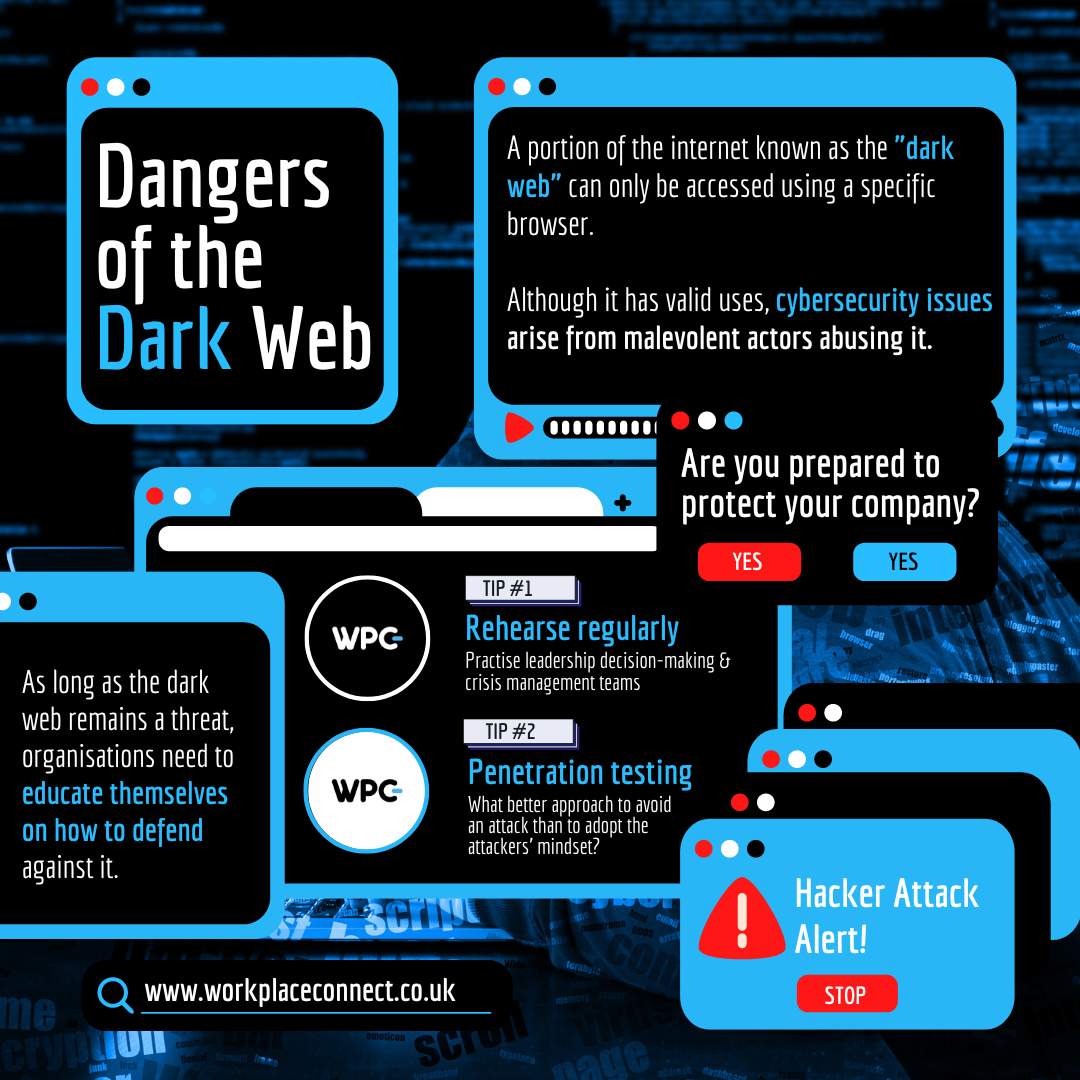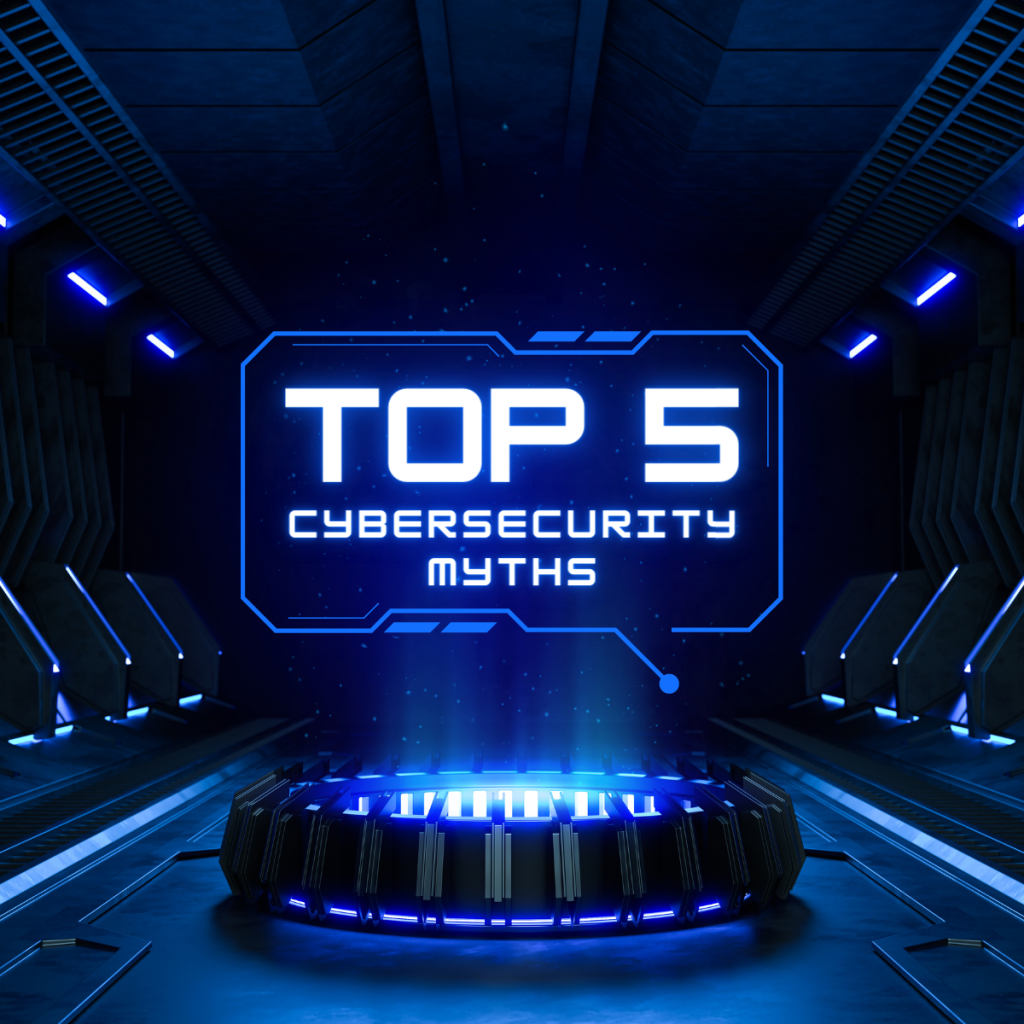The dark web, often known as the darknet, is a section of the internet that is impossible to access without the right tools and authorisations. Even if a typical web user of a widely used internet browser like Google Chrome or Internet Explorer is unlikely to be going on a virtual dark trip, security leaders nonetheless need to make an effort to comprehend the dangers the darknet poses.
A portion of the internet known as the “dark web” can only be accessed using a specific browser. Although it has valid uses, cybersecurity issues arise from malevolent actors abusing it.
As long as the dark web remains a potential threat, organisations need to educate themselves on how to defend against it.
What is the Dark Web?
The dark web is one of the three components of the World Wide Web.
- The surface web, or clearnet, is the area of the World Wide Web that the majority of users access daily using search engines. It makes up between 5 and 10 percent of the web, a sizeable but insignificant portion. You can access the surface web without a password by just searching and browsing. It features search results from sites including Facebook, LinkedIn, YouTube, Google, and Bing.
- The deep web is the part of the internet that is not accessible to search engines and requires authentication to access. The majority of individuals regularly access content on the deep web, including webmail, pay-walled news articles, private social network posts, etc. Medical records, public documents, information on the missing, and sections of organisation websites that are only for internal use are some examples of deep web content.
- The dark web is a tiny portion (4-5%) of the deep web. It can only be accessed using a particular browser. The most popular dark web browser is the Onion Router, which is renowned for providing its users with anonymity. However, there are other overlay networks on the black web that require particular software or configurations to access.
A Centralized Destination for Obtaining Tools Used in Cyber Attacks
Hackers can use the dark web in a variety of ways to find the materials they need to assault a target organisation. Ransomware is one of the most prevalent products and is now uncomfortably affordable. Anyone can purchase a malware variant that can be utilised again for less than $1,000. While ransoming of individuals is common, organisations are obviously a much more profitable target.
Digital purchases aren’t the only ones available in the market. Those with an interest can also purchase actual attack tools like malware-infected USB drives or credit card skimmers. A former student recently used a “USB Killer,” a USB thumb drive that releases electrical current to damage any attached device, to wipe out 59 computers at a tiny college in New York in just one night. Although the “USB Killer” is startlingly legal to purchase, individuals who don’t want their purchases to be monitored can also find it—or anything similar—on the dark web. In the hands of an insider with bad intentions who has gained entry to workstations and servers, such physical devices would be especially powerful.
A Clandestine Market for Selling the Spoils of a Data Breach
Many malware variants aim to compromise systems in order to steal data. Attackers can use stolen credentials to perpetrate identity theft on themselves. The volume of data that is typically stolen from these breaches, however, is greater than one person could ever use in their lifetime. Even more, money can be made by selling these credentials than by using the information directly. The best and most natural place to sell such documents is on the dark web. On the dark web, a hacker going by the handle Gnosticsplayers listed hundreds of millions of accounts for sale, earning thousands of pounds in Bitcoin.
There are many other items for sale in addition to usernames and passwords. The entirety of a person’s identity, including social security and bank account data, is also for sale on the dark web. For instance, outdated tax returns that have been stolen from accountancy and law firms are easily accessible and cost virtually nothing. An outdated W2 can be purchased for a few pounds or less, making it possible to open accounts, file false tax returns, and commit other identity theft crimes.
Not for Sale: Keeping Data Off the Dark Marketplace
When there are so many means to carry out attacks and a place where the loot from these attacks can be sold, it can be intimidating to think about how to erect fortifications. But there are many ways for your business to stop or address threats that come from the dark web:
- Protect against ransomware. The hackers adore it. Attacks against hospitals, banks, and even some utility services are on the rise, as was the case with the 2015 attack on the UK Parliamentary Digital Service. Employee awareness training will help create a solid and knowledgeable security culture. paired with strong technical preventative measures that increase resilience. In the case of a ransomware attack, having a strong business continuity plan in place will be beneficial.
- Update outdated technology. As a result of the fact that a lot of older IT gear wasn’t built to withstand contemporary attacks, organisations with historical IT equipment and computer systems are more vulnerable to security breaches. For your technology to be able to keep up with increasing threats, you need an efficient information security plan and an adequate IT security budget.
- Rehearse regularly. Businesses frequently have procedures in place to handle terrorism or extreme weather, but not cyberattacks. A lot of times, organisations only have IT-focused strategies in place, therefore it’s crucial to frequently practise leadership decision-making and crisis management teams in the context of cyber security. Making sure insurance is as thorough as possible is also crucial.
- Endpoint Protection. You should secure every endpoint in your company, just as you would lock every window and door to your home. While workstation antivirus is standard practise, your servers, which are the main data storage platforms that data attackers and threat actors are keen to target, should also have server-specific, native antivirus installed as a top priority.
- Identity and access management. Control can be attained via Identity and access management (IAM) solutions, which provide a strong approach to regulating and restricting access by utilising the concept of least privilege, which emphasises granting users access to only what they need, when, and how they need it. Employees need some access to carry out their duties, but not all employees have that access, that can be all too easy to abuse.
- Penetration testing. What better approach to avoid an attack than to adopt the attackers’ mindset? In order to securely exploit security flaws, penetration examinations use ethical hacking. This gives businesses knowledge and enables correction before an attack even happens. Organisations are kept up to date on the newest threat actors’ strategies, methods, and technologies by conducting regular penetration tests. Threat actors prosper in settings where people and organisations are uneducated, in the hopes that their fear will paralyse them into inaction. The best approach to keep your data safe in their systems and off the dark web is to remain watchful and take proactive steps to set up walls to protect it.







